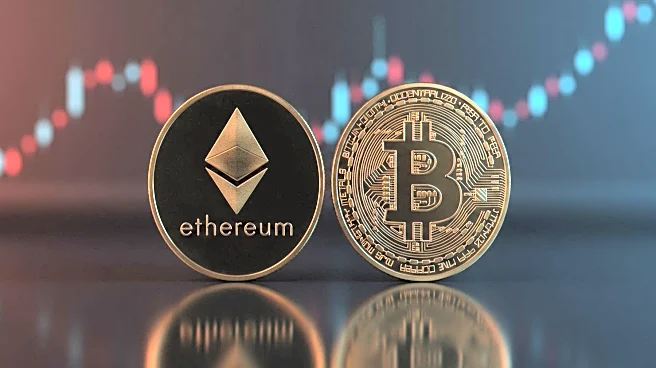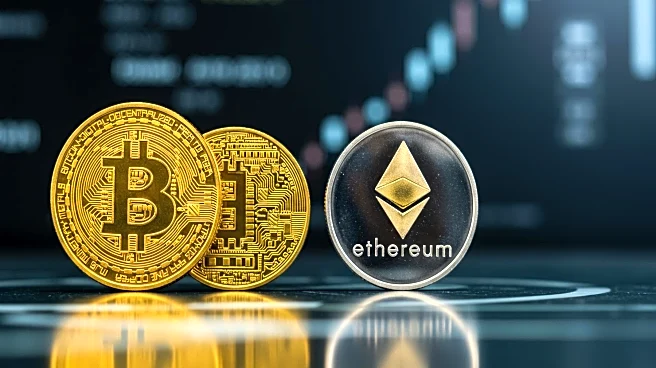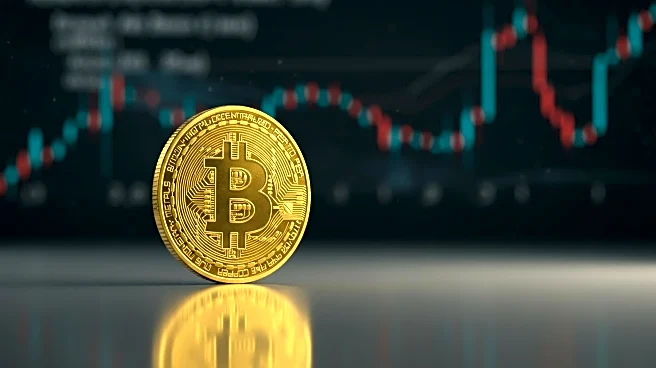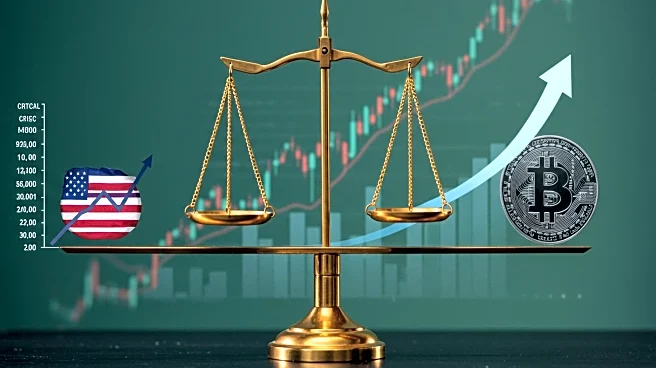What's Happening?
The crypto market is experiencing a surge in institutional inflows and price action driven by expectations of an imminent U.S. Federal Reserve rate cut. Bitcoin and Ethereum are at the forefront, with Bitcoin reaching an intraday high of $117,300 and Ethereum soaring nearly 15% to $4,885. This development follows remarks by Federal Reserve Chair Jerome Powell at the Jackson Hole Symposium, hinting at a potential September rate cut. Institutional investors have been steadily accumulating Ethereum, with over $1.6 billion in commitments reported. The influx of capital has propelled Ethereum ETFs into the spotlight, with inflows in July alone outpacing the previous 12 months.
Why It's Important?
The surge in institutional interest in Ethereum and Bitcoin highlights a structural shift in the crypto market. Ethereum, in particular, is gaining traction as the preferred platform for stablecoin activity, accounting for over 40% of all blockchain fees. This growing adoption signals a transformative phase in the digital asset space, supported by regulatory tailwinds like the GENIUS Act and Project Crypto. The potential rate cut by the Federal Reserve could further boost Ethereum's price, reinforcing its position as a macroeconomic hedge and expanding its market reach.
What's Next?
The September FOMC meeting will be a critical event for the crypto market, as it will determine whether the Fed will proceed with a rate cut as anticipated. If the Fed follows through, it could provide the final catalyst for Ethereum to break through key resistance levels and establish new all-time highs. For Bitcoin, a rate cut may reinforce its position as a macroeconomic hedge, especially as liquidity continues to rotate into risk-on assets.
Beyond the Headlines
The market remains cautious as analysts highlight the risks associated with euphoric sentiment. The spike in discussions around the Fed rate cut narrative could indicate an overbought market, potentially leading to a local top. Balancing optimism with caution is crucial, as a Fed rate cut may introduce short-term volatility.











